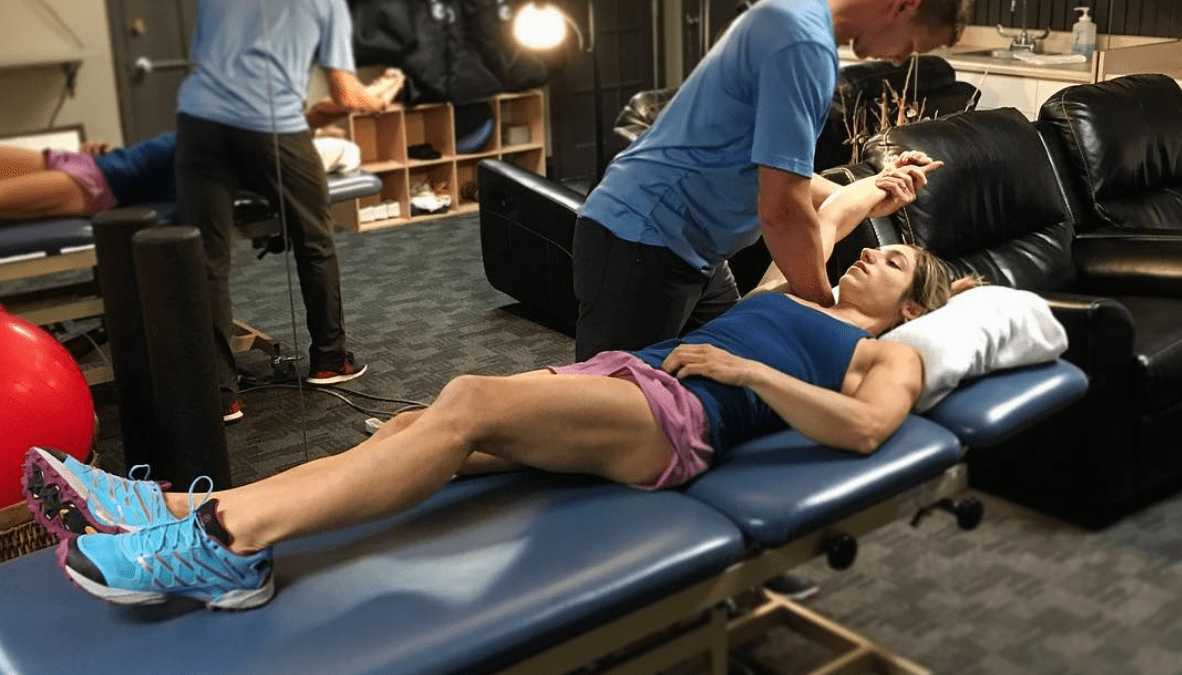8 Tips for the Injured Climber
Be sure to stay active and try something new

Being injured can be really hard on a climber’s morale. There may be physical pain, inconvenience in your day-to-day life and potential expense of treatments, but the hardest part about being injured is often the unplanned time off from doing what you love. The road to recovery can be long and arduous, but there are ways to make it easier. Below are tips on how to get through your rehabilitation.
1. Do Your Exercises
If (when) your health professional gives you exercises to carry out at home, it is crucial that you do them. This may seem obvious but lots of people drop the ball on this.
Rather than doing your physiotherapy work when you have time, carve out the time in advance. A fixed schedule is key. And a good location helps, too. Choose a place where you won’t slack off. Maybe you have a good set-up and can self-motivate at home. If not, consider keeping your membership at the gym and doing your exercises there. Many climbing gyms have training areas nowadays and being in the company of other people training can be motivating. This has the added bonus of staying connected with your climbing community.
The more diligent you are with your rehab exercises the better, and often it’s not just about how quickly you will recover but about correcting an imbalance or weakness in your body that caused the injury in the first place. In that sense, you can think about rehab as an opportunity to learn something, to retrain yourself, to make your body stronger and you a better climber when you get back.
2. Train What You Can
Typically speaking, a climbing injury affects a part of the body that can be isolated: an ankle, a knee, a finger, a shoulder. So, in addition to your rehab exercises, you can often work in some strength and conditioning for the healthy parts of the body. Do this with caution and ideally with some direction so you don’t inhibit your recovery or injure something else.
3. Stay Active
Training isn’t for everyone. If you don’t like to train and you can’t climb, try to find other ways to be active. It may not be as enjoyable as climbing, but it does the mind and body good. When you exercise your body releases endorphins, which are “feel-good” neurochemicals that can help you from feeling down and out.
4. Try Something New
Distractions from your injury can be great. And trying a new thing means no expectations, which is also great. You might meet new people and discover something new about yourself. Maybe there’s something you’ve always wanted to try but never had the time. Well, now might be a good time.
5. Prepare for Setbacks
As you start climbing again, it can be difficult to know how hard to push. It’s difficult to hold back when you’ve been anxious to climb and you start to feel improvements. In this sense it’s easier in the beginning, when it’s obvious that you should rest. It can be tricky to gauge the right amount of intensity during active recovery and setbacks, due to pushing too hard too soon, are common. But they are also not commonly as dramatic as they feel when they happen. Moreover, many health professionals say that setbacks can be helpful because they recalibrate expectations.
6. Celebrate Small Victories
If your recovery program is feeling long, and the end of the road far ahead of you, try thinking back to where you started. Any improvements you’ve made along the way are worth noting as reminders of the progress you’re making. Even better, set yourself small goals. The dopamine-induced pleasure you get when you achieve them helps keep you motivated and your spirits up. It’s all about trying to stay positive.
7. Find a Success Story
Talking to someone who’s come back from the same injury can be really helpful. Hopefully this person can relate to what you are going through and provide some encouragement, if through nothing else but being an example of what’s at the end of the rehab tunnel.
8. Be Patient and Kind (to Yourself)
Despite one’s efforts, injuries can be emotionally trying. Positivity is hard to maintain. But the recovery process is just that – a process, which takes time. So be patient. And when you can’t, be kind to yourself and allow yourself to feel frustrated, angry, sad or whatever else it is that comes. Acknowledging and sharing those feelings with a supportive friend can really help.


